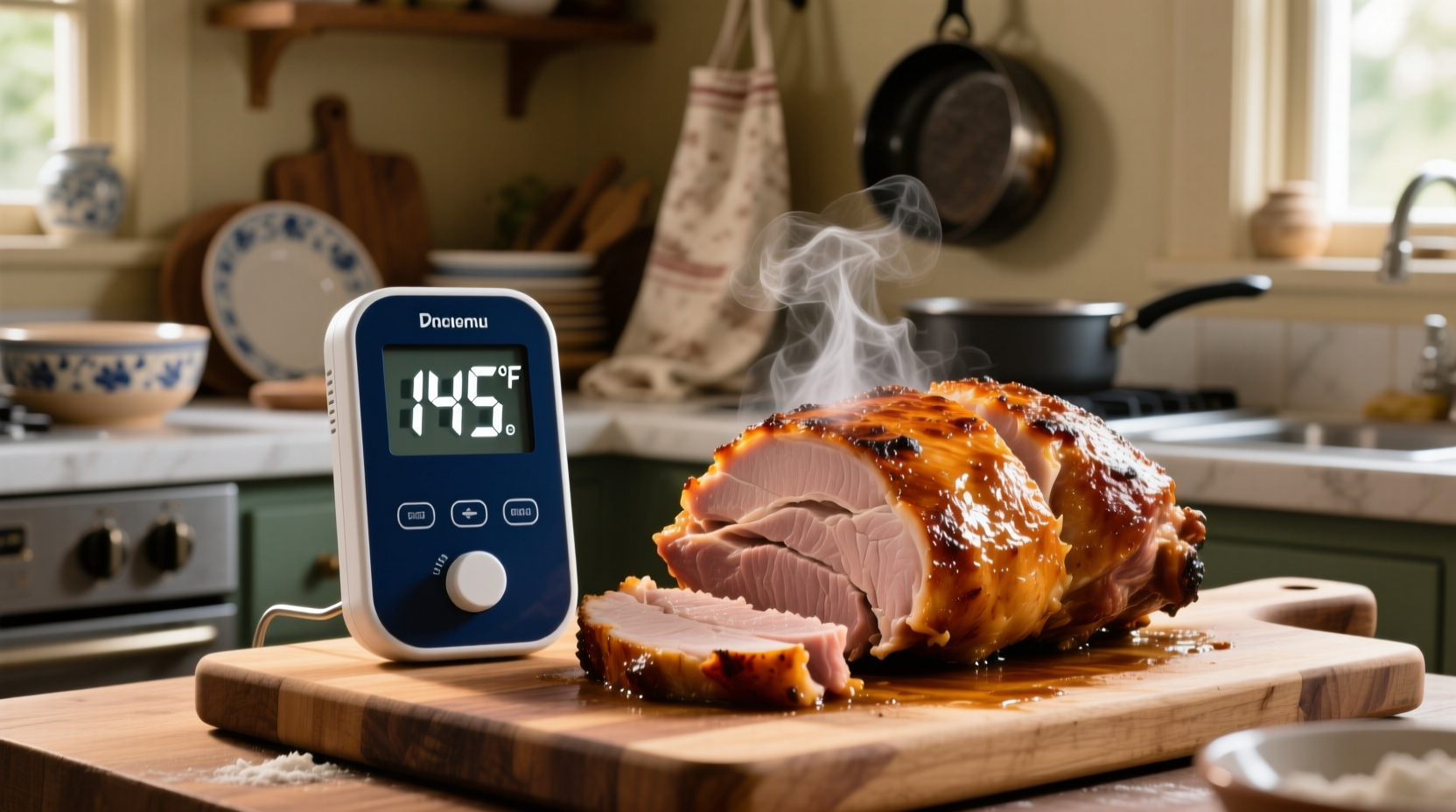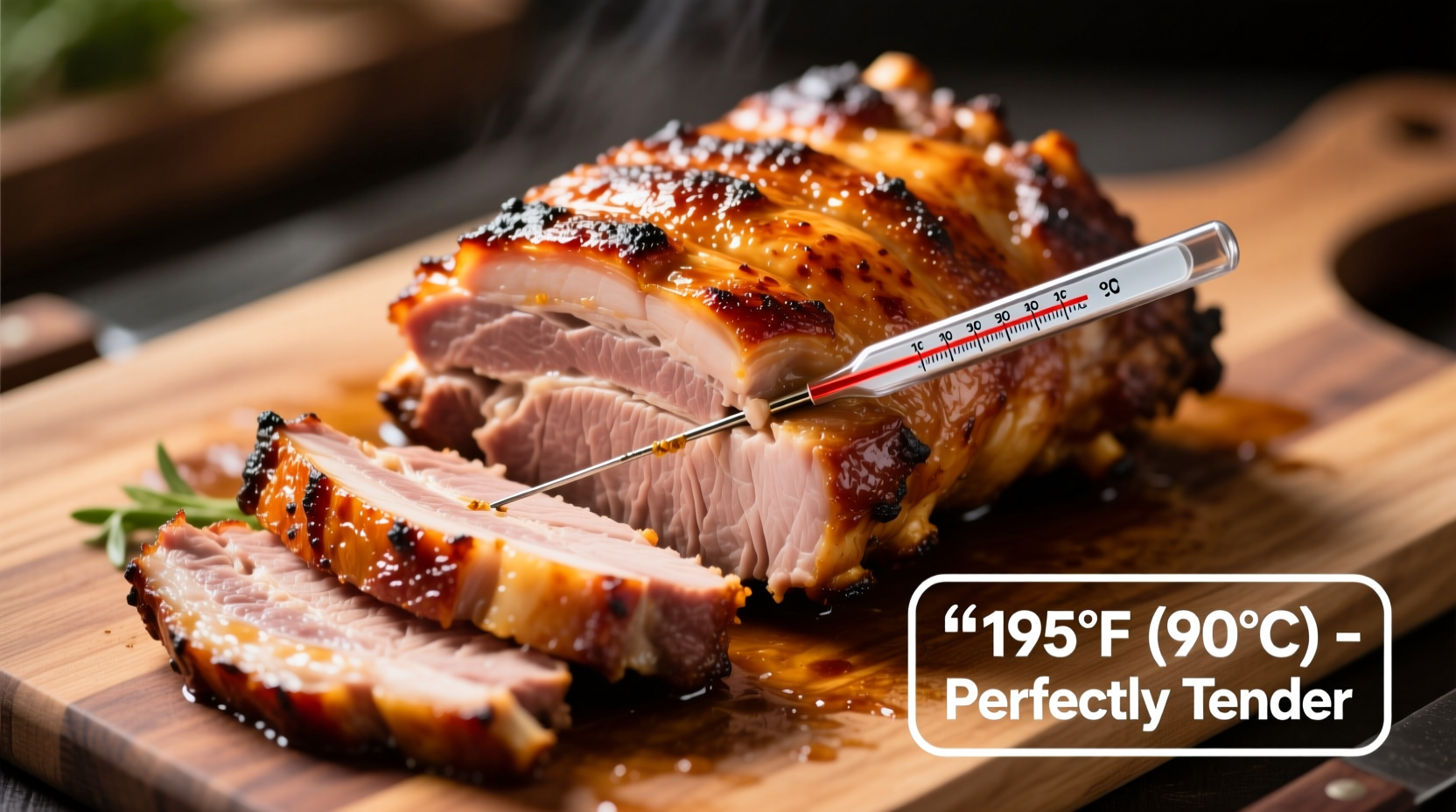The ideal oven temperature for cooking most pork cuts is 325°F to 375°F (163°C to 191°C), with final internal temperature reaching 145°F (63°C) followed by a 3-minute rest period. This ensures safe, juicy, and properly cooked pork according to USDA guidelines.
Understanding Pork Cooking Temperatures: Your Complete Guide
Getting the oven temperature right for pork isn't just about following a recipe—it's about understanding food science, cut variations, and safety requirements. Whether you're preparing a holiday roast or weeknight chops, the right temperature makes all the difference between dry, tough meat and perfectly tender, flavorful results.
Why Temperature Matters for Pork
Unlike beef, pork requires careful temperature management due to food safety concerns. Modern farming practices have virtually eliminated trichinosis, allowing pork to be safely cooked to lower temperatures than in previous decades. The USDA updated its recommendations in 2011, lowering the safe minimum internal temperature from 160°F to 145°F with a 3-minute rest period.
| Pork Cut | Recommended Oven Temperature | Target Internal Temperature | Approximate Cooking Time (per pound) |
|---|---|---|---|
| Pork tenderloin | 400°F (204°C) | 145°F (63°C) | 20-25 minutes |
| Pork loin roast | 325°F (163°C) | 145°F (63°C) | 25-30 minutes |
| Pork shoulder (Boston butt) | 275°F (135°C) | 195°F (90°C) | 1.5-2 hours |
| Pork ribs | 225°F (107°C) | 190-205°F (88-96°C) | 3-4 hours |
| Pork chops (1-inch) | 375°F (191°C) | 145°F (63°C) | 15-20 minutes |
The Evolution of Pork Cooking Temperatures
Understanding how pork cooking recommendations have changed provides valuable context for today's best practices. In the past, pork was routinely cooked to 160°F or higher due to concerns about trichinosis. However, modern farming practices have virtually eliminated this risk.
According to the USDA Food Safety and Inspection Service, the updated recommendation of 145°F with a 3-minute rest time provides equivalent safety while yielding significantly more tender and juicy results. This change reflects decades of improved food safety standards and scientific understanding of pathogen destruction.
Selecting the Right Oven Temperature for Your Cut
Not all pork cuts require the same approach. The ideal oven temperature depends on the cut's fat content, connective tissue, and thickness:
Lean Cuts (Tenderloin, Loin, Chops)
These cuts benefit from moderate to high heat (375°F-400°F) to create a flavorful crust while keeping the interior moist. High heat sears the exterior quickly, locking in juices before the interior overcooks. For best results with lean cuts:
- Preheat your oven properly—don't put pork in a cold oven
- Use a meat thermometer to monitor internal temperature
- Remove from oven when 5°F below target temperature (carryover cooking will raise it)
- Always allow a 3-5 minute rest period before slicing
Fatty, Tough Cuts (Shoulder, Belly, Ribs)
These cuts require low and slow cooking (225°F-275°F) to break down connective tissue without drying out. The low temperature allows collagen to convert to gelatin gradually, resulting in tender, pull-apart meat. For best results with fatty cuts:
- Season generously and let sit overnight for flavor penetration
- Consider wrapping in foil or butcher paper during cooking (the "Texas crutch")
- Be patient—these cuts often take 1.5-2 hours per pound
- Use the "probe test" to check tenderness when internal temperature reaches 190°F

Avoiding Common Temperature Mistakes
Even experienced cooks make temperature errors with pork. Here are the most frequent issues and how to avoid them:
Mistake: Relying on color instead of temperature
Pork can remain slightly pink at 145°F and still be perfectly safe. The USDA confirms that color is not a reliable indicator of doneness. Always use a digital thermometer.
Mistake: Not accounting for carryover cooking
Meat continues to cook after removal from the oven due to residual heat. Remove pork from the oven when it's 5°F below your target temperature. For example, pull tenderloin at 140°F for a final 145°F.
Mistake: Skipping the rest period
The mandatory 3-minute rest period allows juices to redistribute. Cutting too soon releases precious moisture onto your cutting board rather than staying in the meat.
Special Considerations for Different Cooking Methods
While oven roasting is our focus, understanding how temperature interacts with other cooking methods provides valuable context:
- Reverse sear method: Cook at low temperature (225°F) until 10-15°F below target, then finish at high heat (450°F) for crust development
- Convection ovens: Reduce temperature by 25°F from standard recommendations due to more efficient heat circulation
- High-heat roasting: For exceptionally crispy skin (like pork belly), start at 450°F for 30 minutes, then reduce to 325°F until done
Essential Tools for Perfect Pork Every Time
While you can cook pork without specialized equipment, these tools significantly improve your results:
- Digital instant-read thermometer: The Thermapen or similar provides accurate readings in seconds
- Oven thermometer: Verifies your oven's actual temperature (many ovens run hot or cold)
- Wire rack: Elevates meat for even air circulation and prevents bottom from steaming
- Heavy roasting pan: Distributes heat evenly and provides capacity for vegetables
When to Adjust Temperatures for Special Circumstances
Certain situations require temperature adjustments:
- Stuffed pork: Add 5-10°F to final internal temperature to ensure stuffing reaches 165°F
- High-altitude cooking: Increase temperature by 15-25°F above 3,000 feet elevation
- Large holiday roasts: Start at 450°F for 20 minutes, then reduce to 325°F for even cooking
- Leftover reheating: Use 325°F until internal temperature reaches 140°F
Final Pro Tips for Perfectly Cooked Pork
Professional chefs rely on these techniques for consistently excellent results:
- Bring pork to room temperature (30-60 minutes) before cooking for more even results
- Pat meat dry thoroughly before seasoning for better browning
- Use the "hand test" as a secondary doneness check: 145°F feels like the fleshy part of your palm below the thumb when thumb touches middle finger
- For roasts, tent loosely with foil during rest period to retain heat without steaming the surface
What is the lowest safe temperature for cooking pork?
The USDA recommends cooking pork to a minimum internal temperature of 145°F (63°C) followed by a 3-minute rest period. This temperature ensures food safety while maintaining optimal texture and juiciness. Cooking below this temperature increases food safety risks.
Can I cook pork at 200°F and still have it be safe?
Yes, you can cook pork at 200°F, but it must still reach the minimum safe internal temperature of 145°F. Low-temperature cooking requires longer times—typically 2-3 hours per pound—but produces exceptionally tender results, especially for tougher cuts like shoulder.
Why does my pork come out dry even when I follow temperature guidelines?
Pork can dry out if you skip the rest period, cut too soon after cooking, or overcook by even a few degrees. Lean cuts are particularly vulnerable. Always remove pork from heat when 5°F below target temperature, rest for 3-5 minutes, and use a reliable thermometer for accuracy.
How long should I cook pork chops at 375°F?
One-inch thick pork chops typically need 15-20 minutes at 375°F to reach 145°F internal temperature. Thicker chops may require 20-25 minutes. Always use a thermometer rather than timing alone, as oven temperatures vary and chop thickness affects cooking time.
Does pork need to rest after cooking?
Yes, pork must rest for at least 3 minutes after cooking—this is required by USDA guidelines for safety. Resting allows juices to redistribute throughout the meat. For larger roasts, rest 10-15 minutes. Tent loosely with foil to retain heat without creating steam that would soften the crust.











 浙公网安备
33010002000092号
浙公网安备
33010002000092号 浙B2-20120091-4
浙B2-20120091-4